‘The Invitation’ (2015), is a drama mystery movie, helmed by seasoned Karyn Kusama of the ‘Jennifer’s Body’ fame. The premise is set in the backdrop of a dinner party with familiar friends. As the evening progresses, tensions rile up, colouring its vastly unique characters with the fear of an imminent cult ritual. Mystery movies are hardly made with any discernable sense if intrigue these days. While some movies successfully operate within a particular element of the genre, most don’t come close to being perfect and roundhouse in toto. The atmosphere isn’t the only requirement for a mystery film to work. Unless a filmmaker marries atmospheric intrigue with a quality script and well-developed characters, he/she is rarely able to make an impact.
Kusama certainly makes a great impression with ‘The Invitation’. Her reflections of cult heroics in contemporary times burns slowly, with a ghastly, inevitable air of a bad omen. The story is deeply-seated in the past that the group of friends mutually are a part of, and Will and Eden share exclusively. Attaching these brief, yet powerful, moments of the turmoils of the past, enable Kusama to construct an almost claustrophobic narrative that hardly gives you space to breathe come to an end. Kusama explores the energy and dynamism of the characters through this intoxicating interspersion of the past and the present, akin to the way Jean-Marc Valle structured ‘Big Little Lies’, and more recently, ‘Sharp Objects’.
History is a testament to how well-liked cult movies are by the masses at large. Be it the under-cooked shallow presentations that the ’70s offer or the more nuanced, gradual features of contemporary times, films dealing with cults and rituals have always found favours from audiences across the globe. This article discusses the various plot themes, and its million dollar ending.
The Plot

‘The Invitation’s biggest strength is its element of surprise and the unknown. The plot unravels itself most engagingly and certainly takes its time before unleashing its powerful cinematic prowess. The first few minutes show us a couple, driving in the night, going to a soiree. Almost as a forewarning, they hit a coyote, springing out of nowhere, but without purpose? The film isn’t set in a secluded area. During the initial establishing shots, we see that the couple and their friends live in a well-populated area. So a coyote surprising you on the road is highly improbable. It is, therefore, a sign to Will and the viewer as well: beware. Anyway. On reaching their destination, Will and Kira are welcomed by Eden’s new husband, the charming, and suspiciously quiet David. They join their old posse.
A unique feature of the film’s narrative style is the choice of perspective. While it might prima facie seem to be Will’s version of everything, the reality is different. Our protagonist is as uninformed as we are; as suspicious and equally unaware of what’s coming next. It is this that indicates the point of view in the movie: the audience. Kusama slyly makes every moment that happens in the house close to Will. If he sees it, we see it. But his perspective is not that of a character. He’ll ask questions that we usually wonder as we watch the movie, pointing things to us as we go along. For instance, when Pruitt takes Claire out of sight and returns, David sees him locking the door. Something which, even though we predicted further into the movie, still held importance at the moment.
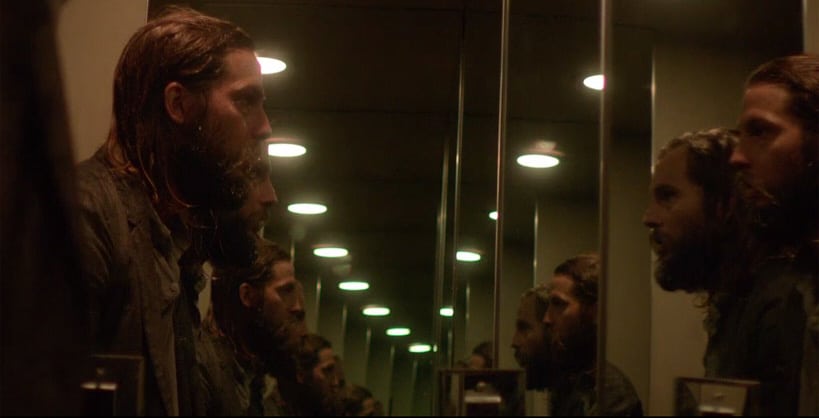
As the party progresses, Will assumes his perspective, which is his intimate connection with the house and his memories of Eden and Ty. The moments that he spends with his memories are the only time he isn’t an agent of the narrative, but instead a troubled peripheral figure, trying to figure out the way to sanity. The memories come in a hurry; the pain’ the shock of losing a child; the anguish. Will feels overwhelmed, and it is beautiful shots like the above that set the tone of the movie. Sadie is a character that Kusama uses very cleverly. She is probably the most explosive and vagrant character in the film, wandering around the house, free, like a spirit on hallowed grounds. Everything Sadie does contorts Will’s and the viewer’s attention and perception of the truth. She’s almost like a distraction; an unnecessary conduit in the hands of Pruitt and David, who use her to wade off our attention, and to that extent, Will’s.

Will, in his coming to terms with his feelings, discovers a video on David’s laptop, which is seemingly shot in a cult camp, something David and Eden had talked about earlier to their friends. It is here that the story really changes gears and descents into an unwinding, all-consuming maelstrom of destruction. Will breaks all the glasses in which the group is offered wine, except Gina, who drinks it and dies, confirming Will’s suspicions. Sadie attacks him in an uncontrollable rage but gets neutralized for the moment. The other three join and kill three of the guests, leaving Will, Kira, and Tommy alive. A cat and mouse game ensues that sees David, Eden, and Pruitt all succumb, failing in executing their plans.
An important event that we realize in the end was important, was David hanging a red lantern outside, just as they were about to execute their plans. The end sees Will and Kira discover the whole city washed with specks of red, an indication that the members of the cult weren’t limited to David and Eden. They resolve to get out as the film ends.
The In-Betweens
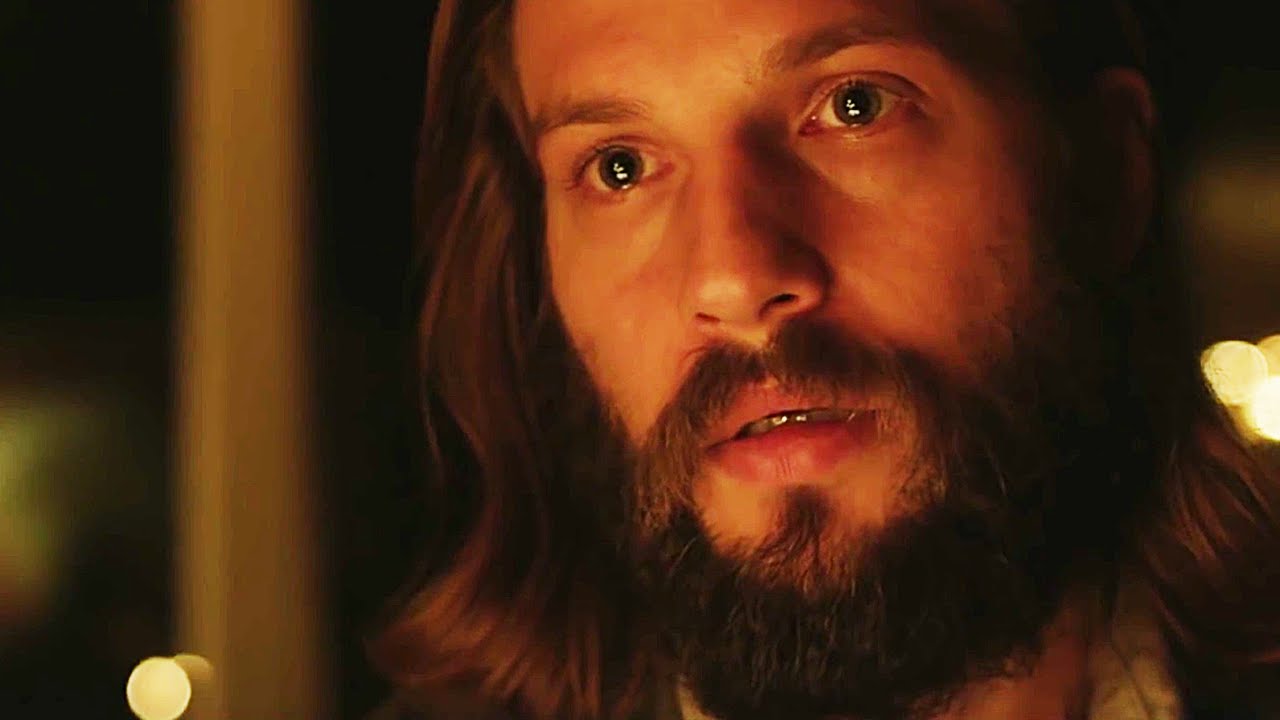
Phew. ‘The Invitation’ makes the most of its gripping tension and intriguing plot. The real victory doesn’t lie in the climax – we all knew what was going to happen – but Kusama certainly triumphs in the way she holds the film together with her craft. The lingering camera, subtly pushing in and tacitly observing every action of the characters, sets the mood and more importantly the sombre tone of the film. Even though it isn’t a horror movie, prominently excluding jump scares and demons, it possesses the vibes that categorize a film as horror. 2016 and 2017 have been years of a renaissance for the modern horror genre, reaching its acme with Jordan Peele’s brilliant ‘Get Out’. ‘The Invitation’ plays well on its available generic tropes and blends the conventional with a freshly unique take on cult rituals and personal grief.
Let’s talk some about the real hero of the movie: the narrative. Movies can broadly be categorized into two classes on the basis of how we identify the driving force in a film. The first category of films is protagonist oriented. These kinds of movies often revolve around their main centrepiece and assist him in moving the movie ahead. A curious example can be someone like a Paul Thomas Anderson, who heavily derives from the prowess of his main man, or Tim Burton, whose eclectic and colorful cinematic universe is bolstered by some of the most relatable and vibrant characters we have seen.
On the contrary, some filmmakers solely rely on their craft and the story’s strength to move their film ahead. The focus coagulates on the story and how it is told. Proponents of this school of thought are visionaries like Stanley Kubrick and Christopher Nolan, who, though, have challenged themselves with films like ‘A Clockwork Orange’ and ‘Memento’ respectively, exhibit a great understanding of the context in which they express themselves and something latent that is everpresent. ‘The Invitation’ falls in the latter category, juggling with dexterity the two styles to produce a great effect. For brief moments in between Will’s point of view certainly drags the movie forward and includes us in the mix as well, but for the larger parts, the narrative takes precedence.
Storytelling, though incomplete without its main protagonist, is an art in itself. And that emotion must be preserved and endeavored to be achieved and felt in the best possible way. Kusama lays her props in such a way that everything in David and Eden’s party is contributing to the story moving ahead. Be it the pills that Eden secretly hides in the drawer of her bedroom, or Pruitt’s dubious figure hanging over the house with uncertainty; the images communicate. It is this beautiful connection that the viewer successfully establishes with the essence of the story, and everything it entails that makes ‘The Invitation’ a top-drawer effort. ‘The Invitation’ finds itself located at the perfect juncture of cinematic realism and commercial-viability, which affords almost everyone a chance to see and feel the movie. Carrying this universal appeal is difficult, and the movie in question does it perfectly.
The Ending, Explained
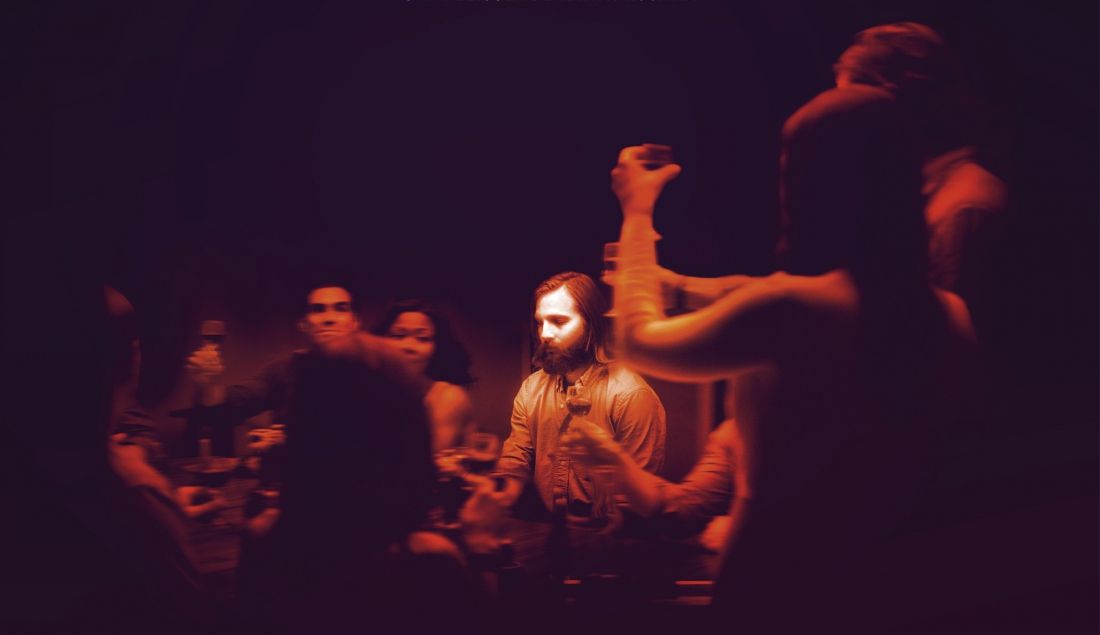
‘The Invitation’ ending isn’t ambiguous, but it also offers no closure. As Will and Kira conquer the battle, the ending shots draw them against a war that will be difficult to win. The camp that Eden and David visited was a cult-ritual gathering that brainwashed the two, and apparently, thousands of others, to ‘scientifically’ heal the soul. Pruitt and Sadie are members too, helping the hosts take their victims. The great part about ‘The Invitation’ is that it plays with its suspense. The transition of suspense from Hitchcock to the modern-era has been refreshing. While more often than not suspense thrillers play on the idea of the unknown and what’s next to come, ‘The Invitation’s ending is inevitable; we know what will happen, and yet are intrigued till the last minute. The movie plays on the known and draws us in with how it will all end.
The transcendence from a conscious to sub-conscious existence is at the core of the camp’s ideology or method to heal, which basically translates into killing yourself. It is sugar-coated with all gibberish like ‘you’ve made a choice’ and ‘renounced all grief and pain’. But in the end, its entirety depends on the sacrifice, and God knows what follows after. Eden is a grieving mother whose loss of an only child was an overwhelming feeling, one which she hasn’t been able to cope with. Separated from her husband, Eden desperately looks for a mechanism to relieve herself from the pain and anguish and is led to the camp with David. Will, on the other hand, has a different life altogether, detached from his former world. It is only when he returns to the house that the feelings inundate him with guilt and repentance.

The ending comes alive from the moment Eden pours glasses with poisoned wine. The mix of nervousness and joy blanks her face and is a forewarning of what is to come. The movie springs to life and every little action of the characters in the middle starts making sense. The locked doors; the red lantern; the pills; the no-reception. Credit has to be given to Kusama the way she constructs the ending and blocks it. All the four enablers are positioned in a patronizing manner, giving us the feeling of being watched over. It remains to see if the producers come up with a sequel anytime soon, because, with the climax that we witnessed, stakes are high for a continuance.
The red lanterns in the neighborhood could mean that the members of the cult had selected a particular day to carry out the executions. After all, every reform needs a plan. And given how ‘scientific’ the whole endeavor is, organization and planning can be a presumed notion in the ending. People like Sadie and Pruitt, who belong to the cult, or are hailed as outsiders, might be assigned neighborhood to neighborhood for ensuring that their plan of mass killings goes ahead successfully. The ending also beckons a question: can the human mind be influenced so easily?
Final Word
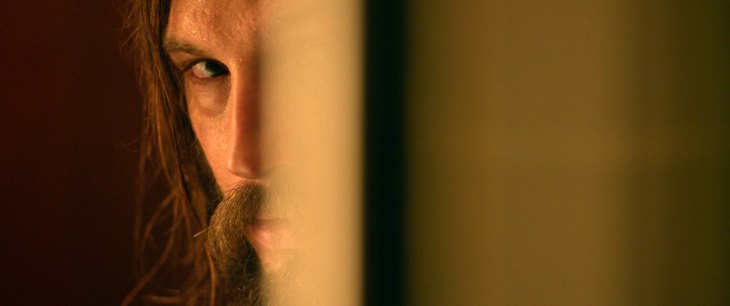
Much like religion, cults also derive their power from people’s vulnerabilities and superstitions. The very existence of a supernatural or supreme entity embeds in the conscience of people a natural fear and habitual obedience. The helicopters and chaos, in the end, points to an acute deficiency in human faculty to efficiently differentiate between delusional and rational.
While natural law is certainly the compass that governs us all, the involvement of the human hand in its proceedings makes it impure and takes away its original form and shape. Kusama metaphorically explores the theme through Sadie. The first impression that one gets seeing her is that of having been brain-washed and misled. Extracting obedience from such a person is fairly easy, thus enabling detractors to manipulate them to achieve much more diabolical ends. She’s like one of those conduits, or props, in a bigger, much more inhumane narrative, that constantly tries to fall itself in the ascendancy and overthrow the natural order. ‘The Invitation’ is steady in not overplaying the concept and strikes a perfect balance, walking the line between metaphysical frippery and subtle, contextual realism with envious level-headedness. Overall, ‘The Invitation’ is a more than impressive effort and certainly a movie that lays out great potential for the modern-redefined meaning of horror cinema.
Read More in Explainers: Birdman | Life of Pi | Inception

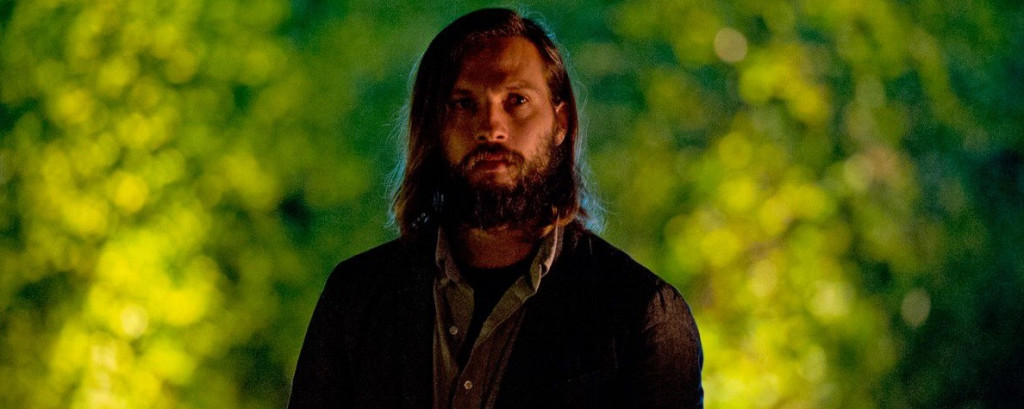
You must be logged in to post a comment.